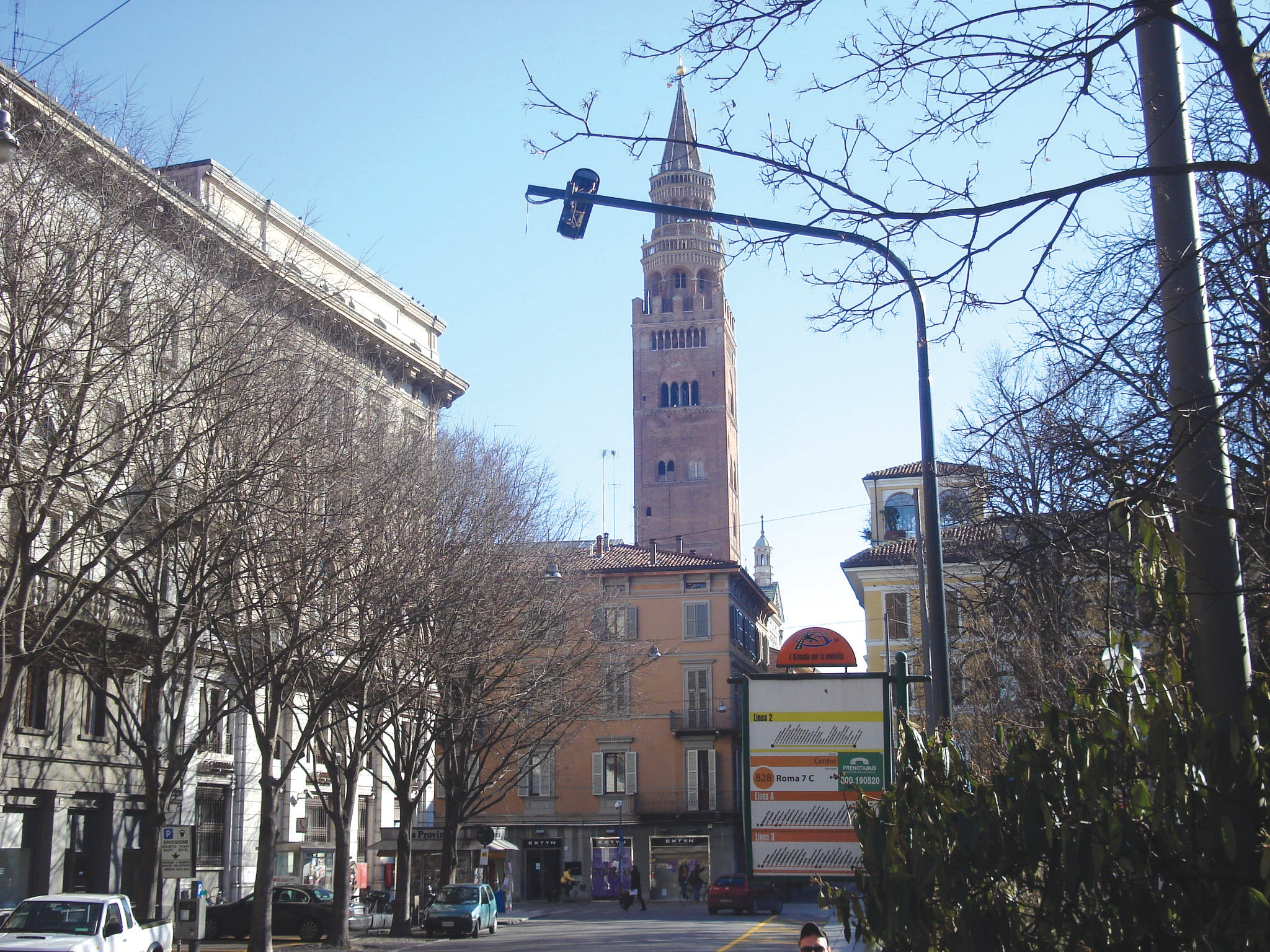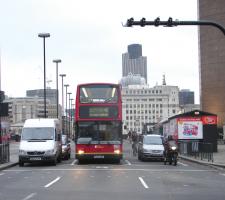
In some Italian and German towns and cities, the solution to congestion in an outright ban on certain types of vehicles
Kapsch's Dietrich Leihs talks about the true fundamentals of urban pricing.
In some Italian and German towns and cities, the solution to congestion is an outright ban on certain types of vehicles "As long as there is a payment involved, the reality is that congestion charging is probably a pill that you can't sweeten" Dietrich Leihs As far as Dietrich Leihs is concerned, any attempt to sweeten the pill that is congestion charging is only ever going to be a partial success at best. He thinks that we need to start asking the right questions of the public and addressing other issues, such as information provision, which we have so far neglected to a degree."As long as there is a payment involved, the reality is that congestion charging is probably a pill that you can't sweeten," says Leihs, Senior Solution Manager Urban Traffic Solutions with
"Congestion charging needs to be viewed in terms of access regulation, not as a toll. Congestion reduction and environmental improvements are commonalities right around the globe. There were two traditional approaches to the problem: do nothing, or improve arterial/junction management. Now, there is a clear international trend towards regulating access either on a relatively small scale, such as with the congestion charging zones we see in London and Stockholm, or across a much wider area, as is demonstrated by the low emission zones we're seeing springing up right across Europe.
"Here again, there are two main possibilities: either an outright ban on vehicles, as happens in some towns and cities in Germany and Italy, or charging, as happens in London and Stockholm.
"Cities don't really have much choice but to take action. However, if you ask individual citizens if they're in favour of charging the response will generally be negative. We're not asking the right questions. We should be asking people whether they want a given level of sustainability and liveability. The public attitude in Gothenburg, for instance, changed from rejection to acceptance as a result of the beneficial road traffic drop of the Stockholm implementation. That way, the pill is still bitter but at least the need to take it is better understood."
The underlying fact, no matter how politically unpalatable it may be, is that we have to change people's behaviour, Leihs stresses.
"I followed the public vote on charging implementation in Edinburgh. People there did not vote on how to manage future mobility, they voted explicitly on the charge. Why ask people when there really is no choice? We need more political courage. Heavy taxation is a socio-economic reality in many countries but charging is a relatively small percentage of the overall take. We're still left with the issue of how to pay for mobility and a cleaner environment. People get accustomed to change; the question is how to motivate them to accept and use alternatives like the HOV [High-Occupancy Vehicle] concept, green cars or simply to shift to public transport."
Regional comparisons
Where Europe has tended towards cordon charging schemes, in the US 'congestion charging' most commonly refers to managed HOV and High-Occupancy Tolling (HOT)) lanes.Leihs: "It is not possible to compare this highway-oriented approach with its extra reserved lane for special vehicles to tolling in cities, where you cannot spare an extra lane.
"Nevertheless, I think HOT lanes are an elegant way of demonstrating to the public the problem and effects of congestion in a dynamic way. The US sees HOT lanes as a component part of a bigger policy, to be used in conjunction with public transport. There are also innovative mobility credit point schemes. Points get used up very quickly if used normally. If a person drives a high-occupancy vehicle, points get used more slowly. Using public transport can make the points allocation last all year.
"That's a great example of how to deal dynamically with individuals' mobility because it affects their decisions; it teaches them that their mobility has 'value'.
"In Europe, this 'value' is represented by variable tariffs like in Stockholm. If you really have to travel during peak hours, this costs more than during off-peak hours; at night passage is free. People can choose between driving later, using public transport or paying the higher charge. This time-dependent variable scheme works perfectly to cut peak traffic demand as peak hours rarely change. Here, a driver can exactly predict the cost for the access, it does not change unexpectedly.
"A similar variable charge is set up in Milan for vehicles according to their Euro emission class. The polluting cars' access is more expensive than that of modern cars. As a result, people change to cleaner cars, upgrade their old cars or shift to public transport.
"London could be variable like this. And it could be dynamic, say if the actual environmental situation requires immediate action. But there needs to be a means of communicating to individuals what the cost of travelling will be at any given point in time - literally, 'This is the cost now'. HOT lanes for instance, via overhead signs, give drivers information on what it costs to travel right now on any given lane. Charging itself is just software, nothing more."
He sees a role for a strong mayor here: someone who will steer a deployment and publicity campaign at the local level.
The consumer electronics debate
Reaching people is not a technical problem, although it is difficult to say with certainty how a charging scheme might look 10 years from now. A lot had been made of the potential for aftermarket consumer electronics devices, particularly navigation systems which offer a value-added service and already have many elements of what is needed for time/distance/place-based charging, to take some of the 'sting' out of what is essentially a distress purchase.However, Leihs feels, although the idea of using off-the-shelf navigation systems as tolling devices might be feasible from a technical perspective, there are some fundamental issues in terms of market positioning and operational risk which make this less likely.
"Aftermarket navigation systems could certainly be used by urban authorities to channel charging information like the actual tariff but they are not really suitable for charging as we have to look at why people have navigation devices in the first place.
"If you look at what people are really buying, it's the idea that they have an advantage over others on the road - the exclusive, personal ability to find the most convenient route.
"Charging isn't an 'advantage', it's a 'disadvantage'. The TomToms, Garmins and others of this world probably aren't going to want to sell a disadvantage, and who is going to buy an urban authority's proprietary nav system?
"Even more grievous is the fact that toll operators do not want to take the risk of losing income due to the fact that off-the-shelf GPS equipment does not locate accurately enough because of urban canyons or because they may be manipulated by the user in much the same way as he or she puts his own profile on the unit.
"The sheer diversity of manufacturers and types poses severe concerns in terms of standardisation: to make sure that a unit works properly and is tamper-proof, the vendors would have to undergo very detailed certification processes. This would result in less choice, devices that are expensive and probably clumsy, and one shouldn't forget the communication cost from the unit to the operator. That in turn would reduce the operator's revenues.
"Our experience here at Kapsch is that in city environments DSRC tag-based or video-based systems hold the most promise in terms of effectiveness and efficiency for both the road user and the operator. I think that navigation and charging systems represent two different worlds, whether in the urban setting or any other environment."
Standards
Leihs's observation on bespoke systems highlights the issue of standardisation."There could always be more effort in this respect," he thinks. "In Europe, the
"Highway tolling is well represented by organisations such as
This perhaps reflects a difference in purpose, in that strategic routes tend to be tolled as a means of paying for construction and operational upkeep. There is a commercial motive for their existence. Urban charging however tends to be about demand management and traffic control.
Leihs: "As a result, developments in urban charging tend to be heterogeneous. If we had a standard comparable to the 'Eurovignette' Directive that could include common charging schemes, procedures or guidelines for clear and understandable access conditions, communities would lose some of their restraints and the deployment of new charging zones would be facilitated and accepted in a better way. Organisations such as "
"But who should ultimately be responsible for urban schemes? Public-private partnerships are an option for the future. Public transport companies are responsible for traffic management in many cities and, arguably, public transport and congestion management go hand-in-hand.
"The bottom line is that with urban access regulation like city tolling, you can steer traffic demand. Variable schemes underline the respective value system. Dynamic pricing works.
"It is important that cities use the right arguments when introducing urban tolling and understand its role as a part of traffic management. This together with simple and understandable access regulation is the only way to realise schemes that are accepted by the citizen.
"We need to be thinking about pushing information services much further back upstream than where they are at the moment. Individual drivers should know what the consequences of their mobility decisions will be, the cost of each individual decision and what the alternatives are."












